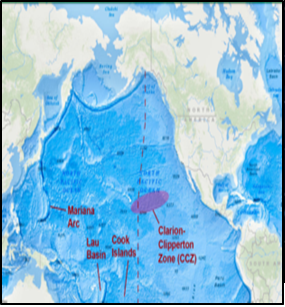“DISCOVERY OF ‘DARK OXYGEN’ RAISES MINING CONCERNS”
Why in the news?
- Scientists discovered “dark oxygen” in deep-sea regions, where photosynthesis is impossible due to darkness.
- The oxygen increase, found in the Clarion-Clipperton Zone, suggests unknown ecosystems and potential effects of polymetallic nodules.
- Nodule surfaces have up to 0.95 V voltage, possibly generating oxygen by splitting water molecules.
source:medium
About Deep-Sea Mining :
- Deep-sea mining, including for polymetallic nodules, is anticipated to expand significantly.
- India and other nations, including China, are pursuing exploration and extraction contracts.
- Past studies, like the ISCOL Experiment, highlight potential long-term environmental damage from such mining activities.
Environmental Concerns:
- Mining could harm ecosystems dependent on “dark oxygen” and affect marine biodiversity.
- Recent studies and insurance exclusions reflect growing concerns about mining impacts on deep-sea environments.
About Dark Oxygen:
About Polymetallic Nodules:
About the Clarion-Clipperton Zone:
|




